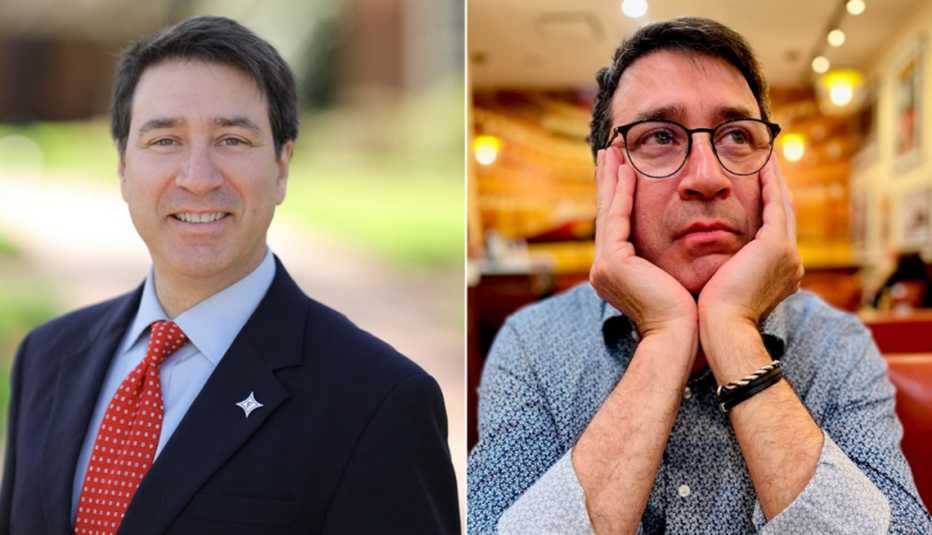AARP Hearing Center


A magnet the size of a lunchbox is sitting against the side of my head. The technician who has placed it, satisfied, walks away and turns on a machine that makes a loud, rapid tap-tap-tap-tap-tapping noise as it sends magnetic waves through my brain.
I’m here because I’ve been stuck in a severely depressed mode for a year and a half. This therapy, called transcranial magnetic stimulation, or TMS, has come highly recommended; nonetheless, it feels like a last-ditch effort in the wake of so many other failed therapies. “This has to work,” I tell myself. If it doesn’t, I’m out of answers.
I’ve coped with depression most my adult life; despite its challenges, I’ve carried on. But when I turned 50, I began to worry more deeply about the condition and my future. In my psychiatrist’s office one summer day a few years back, she asked if I had any questions. Yes, I said. What happens when I run out of options?
I knew that could happen. Over the decades, I’ve tried almost every available antidepressant — Prozac, Wellbutrin, Zoloft, Paxil, Celexa, among others — with limited success. About 30 percent of U.S. adults diagnosed with depression don’t get relief from standard therapies, or the treatments just stop working, according to a 2021 report in The Journal of Clinical Psychiatry. Considering that possibility was like staring down a tunnel and not seeing a light at the end.
A small but significant percentage of men with depression end their own lives. I didn’t want that for myself. I had a teenage daughter. Since her mom and I divorced in 2017, my daughter and I had begun traveling together, just the two of us, on short trips — Boston, Washington, Nashville. I didn’t want to let my challenges affect her and our relationship.
But when the pandemic hit in 2020, the travel stopped. I was living alone in a small town. Working from home, I wasn’t getting out and seeing people, and my depression began to spiral. Then, as I had feared, my meds stopped working. What enjoyment I could still find in my life evaporated.
I always loved cooking, making up meals from scratch or re-creating dishes I’d eaten at restaurants. No dish was too intimidating. I’ve even tackled molé, the sauce from my father’s hometown of Oaxaca, Mexico. I use chocolate, chiles and two dozen other ingredients. Depression took that away. I didn’t have the energy to cook, or the interest. I started eating out a lot and sleeping more — eight hours at night and several hours during the day. Contact with my daughter fell off. I felt myself sliding deep into the dark tunnel. My mind filled with thoughts of suicide, which led to a five-day stay in a mental health facility.
It was there that my journey into alternative depression therapies started. A psychiatrist recommended electroconvulsive therapy, or ECT, apparently the gold standard for treatment-resistant depression. He explained that in ECT, an electrical current is sent through the brain, triggering a seizure. Mine lasted about 30 seconds. Studies have shown that the procedure can change brain chemistry and effectively alleviate depression. My personal psychiatrist thought this was a good idea. I would stay on medication but add the brain stimulation for my suicidal thoughts. I was anxious about having my brain shocked, but I also felt desperate enough to try.































































More From AARP
Mental Well-Being Series
Four challenges to manage emotions, boost resilience, practice mindfulness and pursue happiness, all at Staying Sharp®
7 Things Everyone Should Know About Depression
Who's at risk, common symptoms, and how to get help and ease the pain
Anxiety vs. Depression: How to Tell the Difference
The two mood disorders often occur togetherRecommended for You